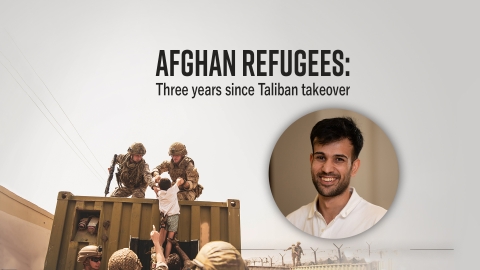
Iqbal Ahmad, Kroc Institute Fellow from the Keough School of Global Affairs at the University of Notre Dame, shares what he has learned as a peace and nonviolence intern for the Maryknoll Office for Global Concerns.
The following article was published in the January - February 2025 issue of NewsNotes.
In many parts of the world, true peace does not simply mean stopping the sound of gunfire. While ending direct violence is critical, lasting peace requires more than ending conflict when it erupts. It requires building conditions of fairness, equality, and well-being that help people feel safe and included. Advocacy—organized actions to influence policies, raise awareness, and involve different parts of society—is an important way to bring these ideas to life.
The idea of “positive peace,” introduced by Johan Galtung in 1969, defines peace as more than the absence of war. It calls on us to fix the deep social problems that cause tensions and unrest, not just reduce physical violence. From this view, peace is an ongoing effort, and communities and leaders must keep working to improve systems and conditions for everyone.
Advocacy fits well into this vision. By highlighting problems, guiding policymakers, and bringing attention to community voices, advocacy can help remove the hidden barriers that lead to conflict. These efforts often involve local communities, decision-makers, and international actors working together. When these groups cooperate, advocacy doesn’t just inform policy; it ensures that changes match what people really need. Over time, this can create better policies rooted in the daily experiences of those affected.
Research by Chenoweth and Stephen shows that nonviolent civil resistance succeeds more often at achieving goals than violent campaigns. Nonviolent movements tend to gain wider support and achieve longer-lasting results.
Advocacy, as a form of nonviolent action, can shape the environment before violence breaks out. Even in peaceful times, advocates can prevent small problems from growing bigger, nudging society toward fairness and trust.
For any effort to achieve a peaceful and just society, it must connect different layers of society and act as a bridge between grassroots realities and the halls of policymaking. Without linking local stories to broader policy debates, solutions risk being too narrow and disconnected.
Similarly, focusing solely on top-level decisions often results in changes that fail to resonate with people’s everyday lives. The beauty of advocacy lies in its ability to weave these layers together. By bringing communities and decision-makers into dialogue through well-coordinated efforts, advocacy ensures that policies are informed by real experiences and genuine aspirations.
This alignment not only amplifies the voices of those most affected but also lays a stronger foundation for meaningful, lasting reforms that address the complexities of everyday life.
At the same time, local advocacy can face serious challenges in environments marked by immediate violence. In places where safety cannot be guaranteed and fear dominates, public discussions may be difficult to arrange, and people might be reluctant to speak openly. Still, the principles of nonviolence and positive peace encourage persistence. Even if it means waiting until conditions improve or relying on trusted intermediaries, advocates strive to find ways for important voices to be heard. As fighting subsides, advocacy can help societies move beyond a fragile ceasefire to address deeper issues, ensuring that peace is not only restored but strengthened over time.
This focus on ongoing improvement reflects the essence of positive peace, which acknowledges that progress is a continuous journey rather than a destination. As communities address one challenge, new complexities inevitably emerge, requiring a dynamic and responsive approach.
Advocacy and peacebuilding thrive on this adaptability, allowing for growth through experiences, whether successes or setbacks. This ability to adjust and evolve is not a weakness or uncertainty but a profound strength. It ensures that advocacy remains attuned to changing circumstances, deeply rooted in human needs, and capable of driving meaningful, lasting impact.
Ultimately, advocacy can help ensure that peace is not defined solely by the absence of violence, but by the presence of enduring social stability. By influencing policies to be more just, amplifying the voices of those often ignored, and encouraging nonviolent solutions to problems, advocacy contributes to a more inclusive and hopeful vision of the future. It reveals that peace is not a single event but a continuous process—an evolving journey of growth, learning, and cooperation. Through advocacy, communities can create the conditions under which everyone can flourish, reinforcing the idea that peace is not something won and then forgotten, but carefully nurtured and continually renewed.
Image of webinar slide from Iqbal Ahmad's presentation on the Afghan refugee situation recorded on September 12, 2025.
